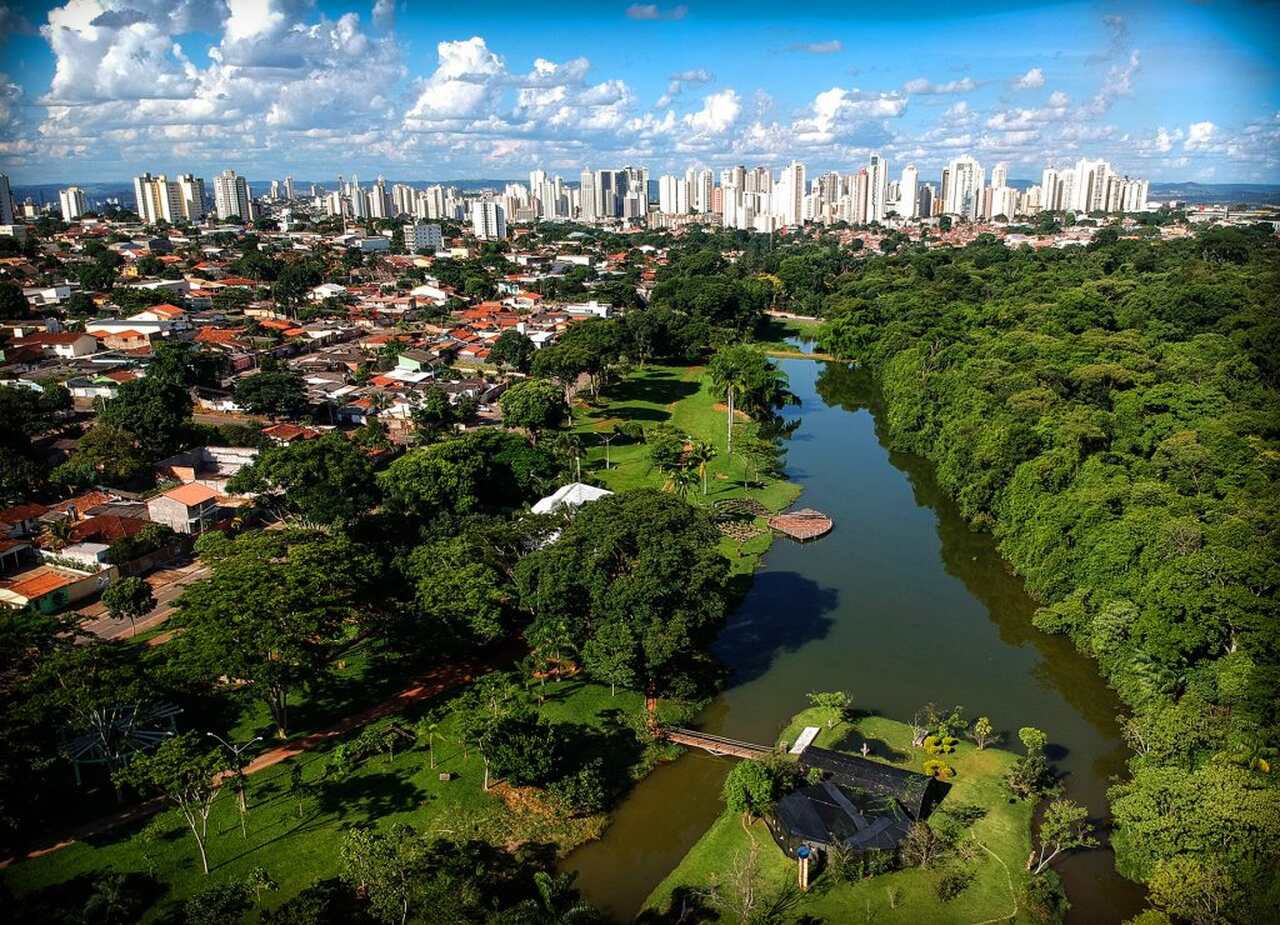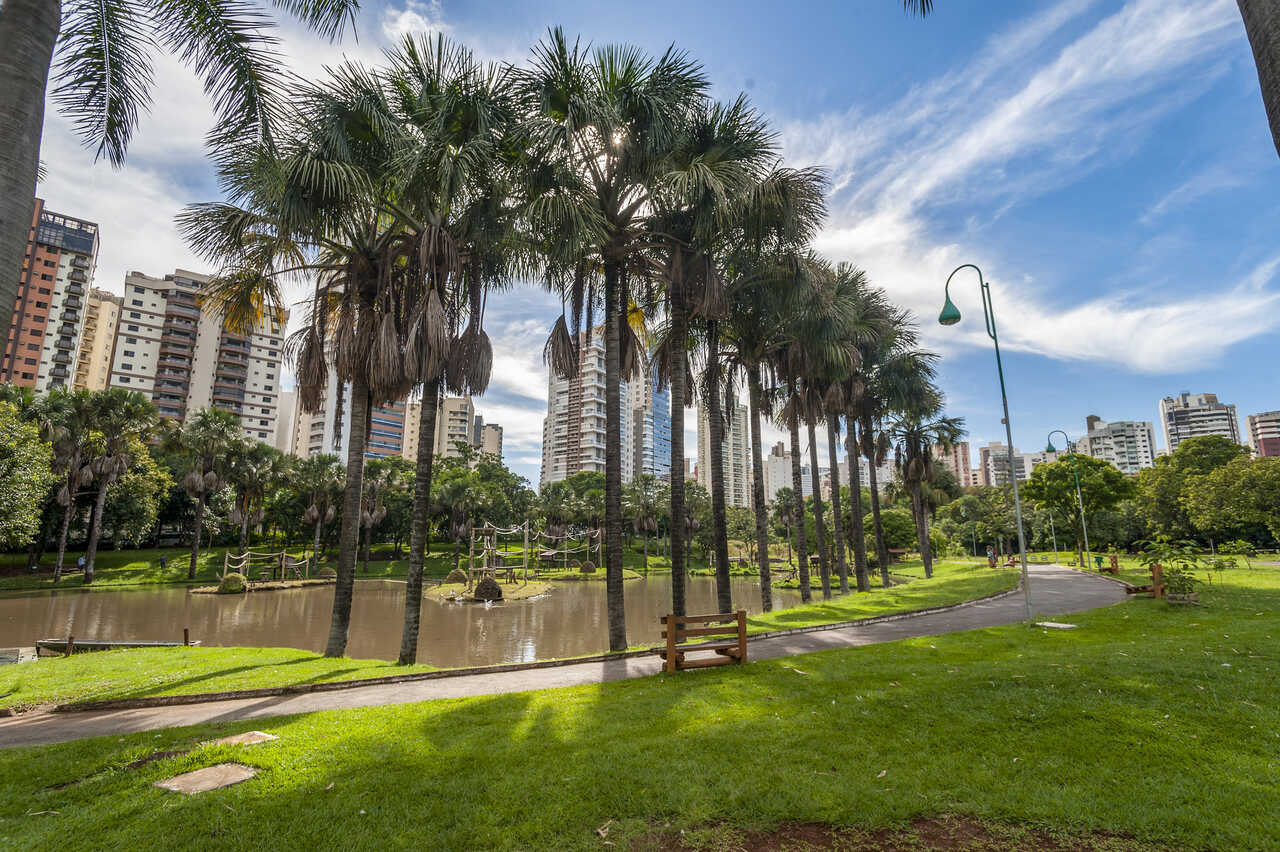Discover Goiânia
A planned, welcoming city with a good quality of life that stands out for having the highest percentage of green space per inhabitant in Brazil (94m2), almost eight times higher than that recommended by the United Nations (UN). The capital of Goiás, nestled in the Central Plateau, Goiânia is also the green capital of the country, full of cultural and tourist attractions.

Its history begins in the 1930s when Pedro Ludovico, an interventor appointed by President Getúlio Vargas after the revolution, began studies to transfer the capital of Goiás Velho to a new location. An area on the banks of the Botafogo Stream was chosen and, on October 24, 1933, the cornerstone was laid. Art Deco buildings were prevalent in the early years, to the point that Goiânia is now the host of the second largest collection of this architectural style on the planet.
In the early years, the population was relatively modest, until the start of construction work on Brasília and the country’s efforts to move inland brought new impetus to the city, which began to experience rapid growth from 1955 onwards. According to IBGE (2024), its population is 1.5 million inhabitants.
How to get there
Goiânia can be reached by air via Santa Genoveva Airport (GYN), just 8 kilometers from the city center. By land, the city is 208 km from Brasília via the BR-060 highway. The city’s bus station offers bus connections to all states and the Federal District.
Where to stay
Goiânia has a wide range of hotels, offering national and international chains and options for all budgets.
What to eat
Goiânia cuisine combines strong flavors and sensations, using regional ingredients such as Pequi; Guariroba, Baru nuts and freshwater fish. When visiting Goiânia, be sure to try the Empadão Goiano (filled with chicken, sausage, cheese and eggs); Galinhada and Matula. A separate attraction are the Pit Dogs, street snack bars spread throughout the city, with their delicious sandwiches. There is also no shortage of national and international cuisine options for all tastes.
What to do
Hippie Fair
Currently located in Praça do Trabalhador, in front of the old train station, the Hippie Fair is the largest in the country, with almost 7 thousand registered exhibitors. On Saturdays and Sundays, they offer clothing products; crafts, footwear, plastic arts and regional articles, attracting visitors from all over the country.
Municipal parks
There are no less than 32 municipal parks and forests, which help to give an idea of the green coverage of Goiânia. The Botanical Garden; Flamboyant Park and Bosque dos Buritis are great options for a walk; a moment of rest and contemplation. The oldest of them, Lago das Rosas is home to the city’s Botanical Garden.

Goiânia Art Museum (MAG)
Since 1981, located in the Bosque dos Buritis, MAG has a rich collection of different artistic languages, with highlights including works by Siron Franco and Amaury Menezes from Goiás; as well as Antônio Poteiro, a Portuguese artist who lived in the city, and Frei Confaloni, who introduced Modernism to Goiás.
Culture Station
The old Goiânia Railway Station was opened in 1950 and operated until the 1980s, receiving freight and passenger trains from the Goyaz Railway. It is one of the most important representative buildings of the Art Deco architectural and urbanistic heritage of Goiânia, listed by Iphan since 2002. Restored by the City Hall in conjunction with Iphan, it was transformed into a Cultural Center and today houses the Frei Nazareno Confaloni Museum in honor of the religious man who became one of the most important names in the field of visual arts in the 1950s.
Oscar Niemeyer Cultural Center
Designed by the legendary architect who gives it its name and opened on March 30, 2006, the Oscar Niemeyer Cultural Center is a complex of cultural spaces located in the South Region. It has a theater, a museum, a library and a monument to human rights.




